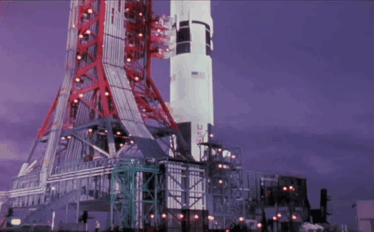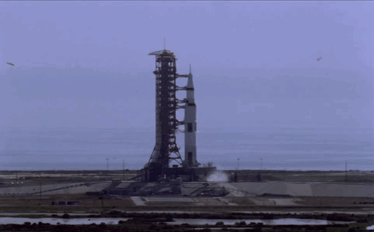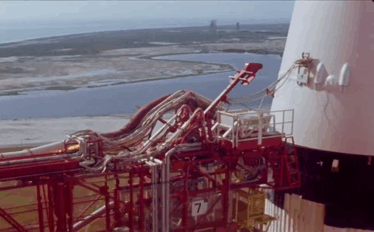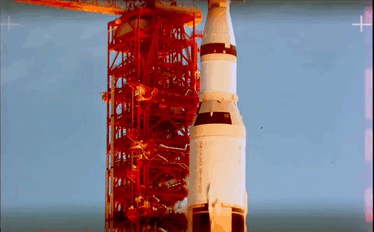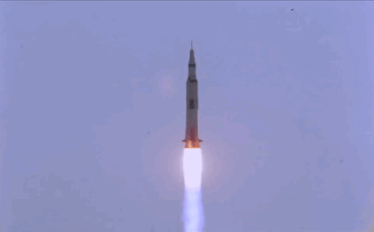Historic Milestone In Space Flight Technology
Historic Milestone in Space Flight Technology
Today, March 30, 2017, marks a significant and critical step in making affordable space travel more possible than ever.
Last April, the whole scientific community worldwide was watching as Elon Musk’s SpaceX successfully launched and landed the Falcon 9 rocket booster, proving for the first time in space flight history that it was possible to save and collect rockets after being launched into space. This March, SpaceX aims to up its standards by relaunching and re-landing the same rocket booster, which will deliver a communications satellite into orbit for a Luxembourg-based telecommunications company.
Why is this important? Simply put, rocket boosters are the most expensive part to build for any type of rocket. While SpaceX claims to have the most affordable rocket launches in the world, solidifying the concept of 100% reusable rocket boosters can save space programs $18 million per launch and open more doors for cost-effective commercial space travel.
If 100% reusable rocket boosters become a reality, the cost of launching rockets, experiments, and people into space can be significantly lowered to the point where non-scientific commercial space travel can be a common occurrence.
I can only wonder, then, how much and how far this development will impact not only the space industry, but the whole world itself. If this pushes through, there can be few excuses, then, for not recognizing the potential in looking beyond our own orbit and planet. With incredible scientific progress and discoveries happening almost every day, I think it’s only a matter of time before everyone sets their sights on the stars and starts pushing for interstellar travel.
We are no longer limited to our own solar system, and the possibilities that come with recognizing and answering to that are as unfathomable as space itself.
More Posts from Catchconstellations-blog and Others
10 Technologies That Are Changing the Game
Earlier this year, we hosted a Game Changing Technology Industry Day for the aerospace industry, and in October our engineers and technologists visited Capitol Hill showcasing some of these exciting innovations. Check out these technology developments that could soon be making waves on Earth and in space.
1. Wearable technology

With smartwatches, glasses, and headsets already captivating users around the world, it’s no surprise that the next evolution of wearable technology could be used by first responders at the scene of an accident or by soldiers on a battlefield. The Integrated Display and Environmental Awareness System (IDEAS) is an interactive optical computer that works for smart glasses.

It has a transparent display, so users have an unobstructed view even during video conferences or while visualizing environmental data.

And while the IDEAS prototype is an innovative solution to the challenges of in-space missions, it won’t just benefit astronauts – this technology can be applied to countless fields here on Earth.
2. Every breath they take: life support technologies
Before astronauts can venture to Mars and beyond, we need to significantly upgrade our life support systems. The Next Generation Life Support project is developing technologies to allow astronauts to safely carry out longer duration missions beyond low-Earth orbit.

The Variable Oxygen Regulator will improve the control of space suit pressure, with features for preventing decompression sickness. The Rapid Cycle Amine technology will remove carbon dioxide and humidity and greatly improve upon today’s current complex system.

3. 3-D printing (for more than just pizza)
New Advanced Manufacturing Technologies (AMT), such as 3-D printing, can help us build rocket parts more quickly and aid in building habitats on other planets.

These manufacturing initiatives will result in innovative, cost-efficient solutions to many of our planetary missions. Back in 2014, the International Space Station’s 3-D printer manufactured the first 3-D printed object in space, paving the way to future long-term space expeditions.

The object, a printhead faceplate, is engraved with names of the organizations that collaborated on this space station technology demonstration: NASA and Made In Space, Inc., the space manufacturing company that worked with us to design, build and test the 3-D printer.

4. Spacecraft landing gear
Large spacecraft entering the atmosphere of Mars will be traveling over five times the speed of sound, exposing the craft to extreme heat and drag forces. The Hypersonic Inflatable Aerodynamic Decelerator (HIAD) is designed to protect spacecraft from this environment with an inflatable structure that helps slow a craft for landing.

To get astronauts and other heavy loads to the surface safely, these components must be very strong. The inflatable consists of a material 15 times stronger than steel, while the thermal protection system can withstand temperatures over 1600°C.
5. From heat shield technology to firefighter shelters

For the Convective Heating Improvement for Emergency Fire Shelters (CHIEFS) project, we partnered with the U.S. Forest Service to develop safer, more effective emergency fire shelters for wild land firefighters.

Using existing technology for flexible spacecraft heat shields like HIAD, we are building and testing new fire shelters composed of stacks of durable, insulated materials that could help protect the lives of firefighters.

6. Robots and rovers
Real life is looking a bit more like science fiction as Human Robotics Systems are becoming highly complex. They are amplifying human productivity and reducing mission risk by improving the effectiveness of human-robot teams.

Our humanoid assistant Robonaut is currently aboard the International Space Station helping astronauts perform tasks.

A fleet of robotic spacecraft and rovers already on and around Mars is dramatically increasing our knowledge and paving the way for future human explorers. The Mars Science Laboratory Curiosity rover measured radiation on the way to Mars and is sending back data from the surface.

This data will help us plan how to protect the astronauts who will explore Mars.

Future missions like the Mars 2020 rover, seeking signs of past life, will demonstrate new technologies that could help astronauts survive on the Red Planet.

7. Robotic repairs
Currently, a satellite that is even partially damaged cannot be fixed in orbit. Instead, it must be disposed of, which is a lot of potential science lost.

Satellite Servicing technologies would make it possible to repair, upgrade, and even assemble spacecraft in orbit using robotics.

This can extend the lifespan of a mission, and also enable deeper space exploration.

Restore-L, set to launch in 2020, is a mission that will demonstrate the ability to grab and refuel a satellite.
8. Low-cost spacecraft avionics controllers
Small satellites, or smallsats, are quickly becoming useful tools for both scientists and industry. However, the high cost of spacecraft avionics—the systems that guide and control the craft—often limits how and when smallsats can be sent into orbit by tagging along as payloads on larger launches.

Using Affordable Vehicle Avionics (AVA) technology, we could launch many more small satellites using an inexpensive avionics controller. This device is smaller than a stack of six CD cases and weighs less than two pounds!
9. Making glass from metal
After a JPL research team of modern-day alchemists set about mixing their own alloys, they discovered that a glass made of metal had the wear resistance of a ceramic, was twice as strong as titanium, and could withstand the extreme cold of planetary surfaces, with temperatures below -150 degrees Fahrenheit.

Bulk Metallic Glass (BMG) gears would enable mechanisms to function without wasting energy on heaters. Most machines need to maintain a warmer temperature to run smoothly, which expends precious fuel and decreases the mission’s science return.

By developing gearboxes made of BMG alloys, we can extend the life of a spacecraft and learn more about the far reaches of our solar system than ever before. Plus, given their extremely high melting points, metallic glasses can be cheaply manufactured into parts by injection molding, just like plastics.
10. Lighter, cheaper, safer spacecraft fuel tanks
Cryogenic propellant tanks are essential for holding fuel for launch vehicles like our Space Launch System—the world’s most powerful rocket. But the current method for building these tanks is costly and time-consuming, involving almost a mile of welded parts.

Advanced Near Net Shape Technology, part of our Advanced Manufacturing Technologies, is an innovative manufacturing process for constructing cryotanks, using cylinders that only have welds in one area.

This makes the tank lighter, cheaper, and safer for astronauts, as there are fewer potentially defective welds.
Follow us on Tumblr for your regular dose of space: http://nasa.tumblr.com


(via A Knight's Mission to Mars)
Hey everyone! I recently had the opportunity to work on and publish an article about student opportunities in the space industry in the University of Central Florida’s student-run publication Imprint. Please feel free to check out my article and see the other awesome work Imprint has!
Exploration is wired into our brains. If we can see the horizon, we want to know what’s beyond.
Buzz Aldrin
Hope for Life on Trappist-1 is a Little Too Bright for Comfort
Bad news, everyone: Trappist-1 may not be the extraterrestrial paradise we thought it would be. On March 29, 2017, a new study was released from the Konkoly Observatory in Hungary that analyzed photometric data on Trappist-1 which was collected by NASA’s K2 mission.
The study suggested that the host star of the Trappist-1 system produces too many powerful solar flares to allow its planets to host and sustain life. Data pointed out 42 high-energy flares that occurred over an 80-day period, 5 of which were “multi-peaked” which means they gave off multiple bursts of energy in one instance. The average time between these flares was 28 hours.
To provide a comparison to understand the magnitude of the solar flares -- the strongest flare on Trappist-1 is equivalent in release of energy to our own Carrington Event of 1859, which would destroy global communications if it happened today. During the Event, the flare sent powerful electrical surges through telegraph lines and produced tropical aurorae so bright, they woke up Rocky Mountain gold miners in the middle of the night because they thought it was morning.
Now, some people might say, “But Earth has managed to survive powerful solar flares in the past. Why can’t Trappist-1 do the same?”
Well, there may be a few reasons why Trappist-1 may no longer be the place to sustain life:
1) Our wonderful Earth has in place a magnetic field that protects us from the worst effects of our host star’s stellar magnetic outbursts, but it is not yet known whether or not the Trappist-1 planets have this same defensive capability.
2) Both the frequency and magnitude of Trappist-1′s solar flares may prohibit its planets from even recovering from previous flares. According to this study done a year ago, it would take 30,000 years for a planet’s atmosphere to recover from just one of a high-intensity flare. Solar flares are occurring every 28 hours on Trappist-1. Logic, then, points out that there is a very small chance of life being possible on any of Trappist-1′s planets.
3) Trappist-1′s planets are very, very close to their Sun -- much closer than we are to our own. This means that the near-constant flaring would likely destroy any chance of stability in the planets’ atmospheres, unless (on the small chance) they somehow have incredibly powerful magnetospheres.
This is definitely disappointing news. I think many people (myself included) had a lot of hope riding on Trappist-1 for the possibility of sustaining life and being a true sister solar system to our own.
But not all hope is lost! There’s still a lot that we can’t confirm about this mysterious and volatile solar system. Scientists are relying on the launch of the James Webb Space Telescope to probe Trappist-1 and give us a more detailed look on what’s going on in that side of the universe. The telescope will launch in 2018, so don’t give up on Trappist-1 just yet! A lot can happen in one year.
Thoughts on the ISS Water Systems
Recently, I was asked by my research mentor to conduct a literature review on the drinking water systems aboard the International Space Station. Let me say this: the technology and the people aboard the ISS really know how to recycle water!
Here are some cool facts I discovered while doing this research:
- Sweat, pee, and tears are all recycled through intensive chemical and physical processes
- There is no way to recycle/reuse solid waste like brine yet, so it is packaged and sent back down to Earth through payloads
- The ISS has a motherboard-like program called the Environmental Control and Life Support System (ECLSS) that basically outlines in detail all the processes that need to be in order to sustain life aboard the spacecraft
- The ISS is currently able to support six living crewmembers aboard, but it is not 100% sustainable because chemical resources (oxygen, water, etc.) are invariably lost over time
Just some things I found interesting. I was glad to do this kind of literature review because it gives me an outlook on how much progress we still need to make in trying to achieve long-term space travel and habitation.
Beautiful! Would like to visit all of these places someday <3









World’s largest salt flat: Salar de Uyini, Bolivia

2. Equating statistical significance with real-world significance
We often hear generalisations about how two groups differ in some way, such as that women are more nurturing while men are physically stronger.
These differences often draw on stereotypes and folk wisdom but often ignore the similarities in people between the two groups, and the variation in people within the groups.
If you pick two men at random, there is likely to be quite a lot of difference in their physical strength. And if you pick one man and one woman, they may end up being very similar in terms of nurturing, or the man may be more nurturing than the woman.
You can avoid this error by asking for the “effect size” of the differences between groups. This is a measure of how much the average of one group differs from the average of another.
If the effect size is small, then the two groups are very similar. Even if the effect size is large, the two groups will still likely have a great deal of variation within them, so not all members of one group will be different from all members of another group. [full list]
-
 catchconstellations-blog reblogged this · 8 years ago
catchconstellations-blog reblogged this · 8 years ago
CONSTELLATION: (noun) Group of stars that form a recognizable pattern to which a mythological or earth-based name is assigned Pattern of stars whose name or is associated with different stories and meanings Story told by stars connected across the infinite night sky, overlapping with countless other stories that have unfolded from ancient supernovas, whose imaginary lines urge our eyes up from the chaos of the world around us to the unknown vastness in which we are but a speck of dust -------- Hi! I’m a starry-eyed astrogeek named Dianne who loves absolutely everything that has to do with the stars and outer space. When I’m not studying or preparing to take over NASA one day, you can find me trying to stargaze despite city lights or happily planning my next road trip.
35 posts
